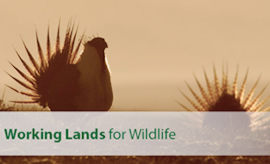During your favorite hike, have you ever wondered which fertilizer or pesticide was used to create and maintain such lush, healthy vegetation? Probably not. That’s because, in nature, plants are growing in a living soil. In just one handful of soil, there are more than 100 million bacteria, several miles of fungal filaments, and another million of algae, protozoa, and nematodes combined. This diverse community is responsible for nutrient cycling and storage and provides competition for disease-causing organisms. Soil fungi are the dominant residents of this community, contributing over 50% of the soil biomass. The obvious stars of this living soil are a specialized group of beneficial soil fungi that form an intimate relationship with plant roots. This relationship is called mycorrhiza. Mycorrhiza plays a key role in plant-soil health and functioning.
First things first… the terms. Thankfully biological terms are mostly descriptive, noting a structure or function of a biological system. “Mycorrhiza” is no different. It simply describes a fungus (myco) – root (rhiza) association. More specifically we are talking about a distinct type of mycorrhiza in which the fungus is found inside of the root, termed “endomycorrhiza”. This MYCORRHIZA type of mycorrhiza is found in most “Myco” = fungus plants and we will be referring to this “Rhiza” = root type from here on out. Looking at internal structures, particularly the arbuscular or “tree-like” structure, Fungus inside roots we can narrow the term even further to “Arbuscular” Mycorrhiza or “AM” (preferred over VAM or vesicular “AM” fungi arbuscular mycorrhiza). To summarize, “mycorrhiza” is the general term used for the association. “Endomycorrhiza” is a specific type of mycorrhiza, and “arbuscular mycorrhiza” is just a more specific name for endomycorrhiza.
All of these isolates are from, in, and around the Great Basin and adjacent plains regions. A diverse group of inoculants suitable for a wide range of grasses, forbs, and woody plants common to the ecosystems of the area.
Glomus intraradices (UT)
50%
Glomus intraradices (AZ)
25%
Glomus etunicatum (NE)
25%
Two desert isolates that develop prolific amounts of mycorrhizal hyphae improving access to soil moisture and increasing drought tolerance.
Glomus intraradices (UT)
50%
Glomus deserticola (CA, Mojave)
25%
Glomus intraradices (AZ)
25%
RTI’s original isolate combined with two very aggressive isolates collected from the California Coast.
Glomus intraradices (UT)
50%
Glomus mosseae (CA)
25%
Glomus caledonium (CA)
25%
Positive results over a wide range of climatic and ecosystem applications from Northern Canada to Costa Rica and the Swiss Alps.
Glomus intraradices (UT isolate)
100%
(120 propagules per c.c. or 100 propagules per gr.)
AM 120 Regional Suite brochure Granite Seed copy.pdf
Granite Seed Restoration Brochure online.pptx (Read-Only).pdf

USDA announces $40 million available to help ranchers restore sage grouse habitat. Click here to be taken to the USDA’s webpage for more information.
Attention Private Landowners! Usda Makes Funds Available For Sage Grouse Habitat RestorationContact us our experts are available to help with your reclamation, erosion control, turf and native seed projects.
CONTACT US